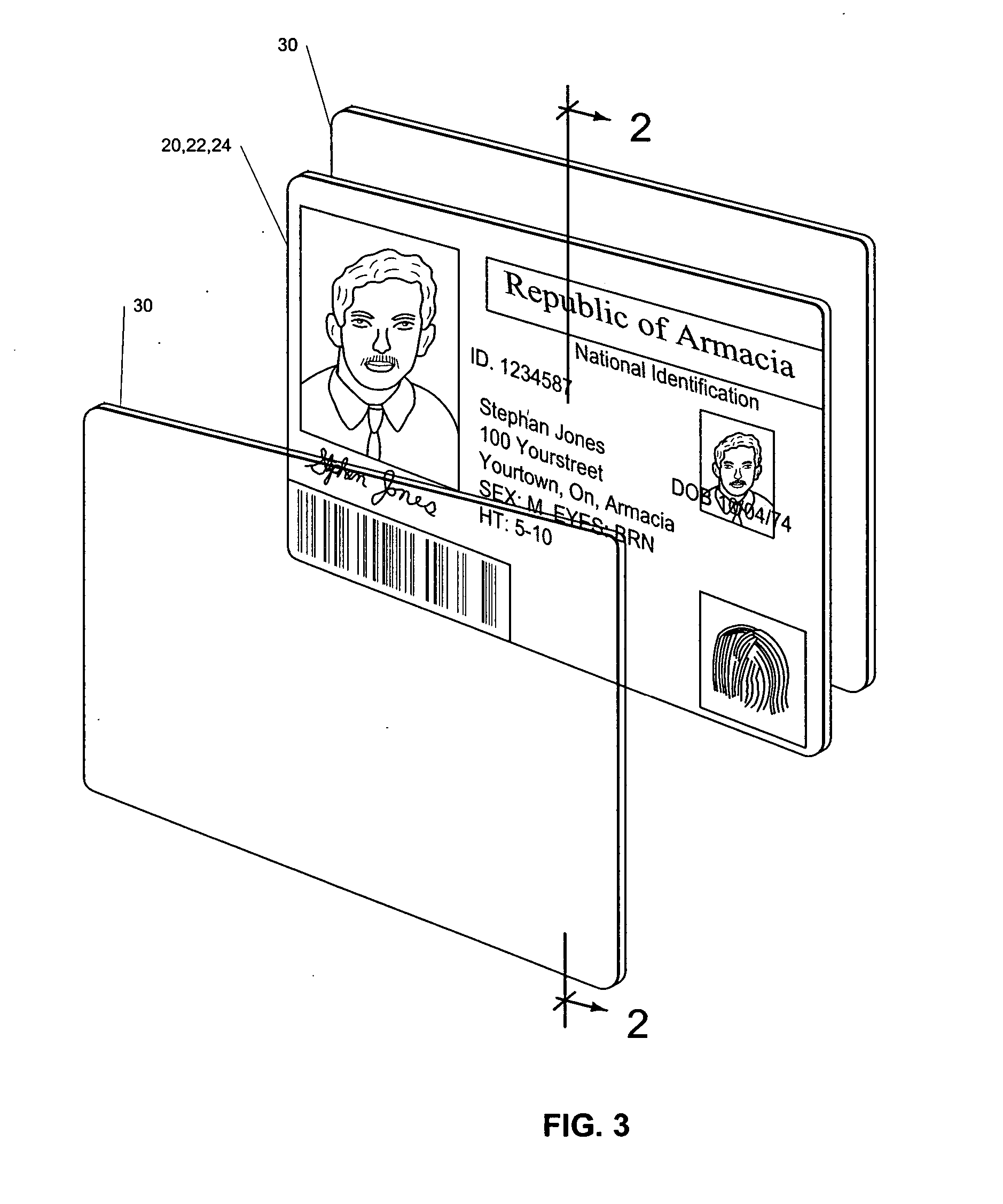Identification document usable with D2T2 printing
a document and printing technology, applied in the field of identification document printing and assembly, can solve the problems of reducing the resistance of the document to cracking, unusable cards, and vulnerable to tampering, and achieves the effects of reducing the risk of tampering, reducing the cost, and ensuring the security of the documen
- Summary
- Abstract
- Description
- Claims
- Application Information
AI Technical Summary
Benefits of technology
Problems solved by technology
Method used
Image
Examples
third embodiment
[0116]FIG. 5 is an illustrative cross sectional view of an identification document 10 in accordance with the invention, where the identification document 10 is at least partially imaged via laser engraving. The identification document 10 of FIG. 5 includes a core layer 20 which is substantially similar to the core layer 20 of FIG. 2 and can be made using the same materials. In this example, the core layer has been pre-printed with fixed indicia 23. A first side (in this example, the bottom side) of the core layer 20 is coupled to a first sheet of transparent laminate 22, where the first sheet of transparent laminate 22 is substantially similar to the transparent laminate 22 of FIG. 2 and can be made using the same materials. A second side (in this example, the top side) of the core layer is coupled to a second sheet of transparent laminate 40, where the second sheet of transparent laminate is either a material that is already receptive to laser engraving or is a material that has a ...
fourth embodiment
[0119]FIG. 6 is an illustrative cross-sectional view of an identification document 10 in accordance with the invention. In this example, the identification document 10 includes a laser engraveable core 20′ but does not require transparent layers. Instead, the image receiving layer 24 is coupled directly to the laser engraveable core 20′. The laser engraveable core 20′ itself is a solid piece of material (e.g., PET or PC) that is sensitive to laser engraving (such as by the addition of one or more laser additives such as those described in the aforementioned laser additive applications). Advantageously, the laser engraveable core 20′ is formed from a substantially opaque material, so that information formed on one side is not visible on the other side.
[0120] The laser engraved indicia 42a-42b can comprise variable information and / or fixed information, and can be laser engraved to the laser engraveable core 20′ second transparent laminate 40 at virtually any time. In particular, the l...
PUM
 Login to View More
Login to View More Abstract
Description
Claims
Application Information
 Login to View More
Login to View More - R&D
- Intellectual Property
- Life Sciences
- Materials
- Tech Scout
- Unparalleled Data Quality
- Higher Quality Content
- 60% Fewer Hallucinations
Browse by: Latest US Patents, China's latest patents, Technical Efficacy Thesaurus, Application Domain, Technology Topic, Popular Technical Reports.
© 2025 PatSnap. All rights reserved.Legal|Privacy policy|Modern Slavery Act Transparency Statement|Sitemap|About US| Contact US: help@patsnap.com



